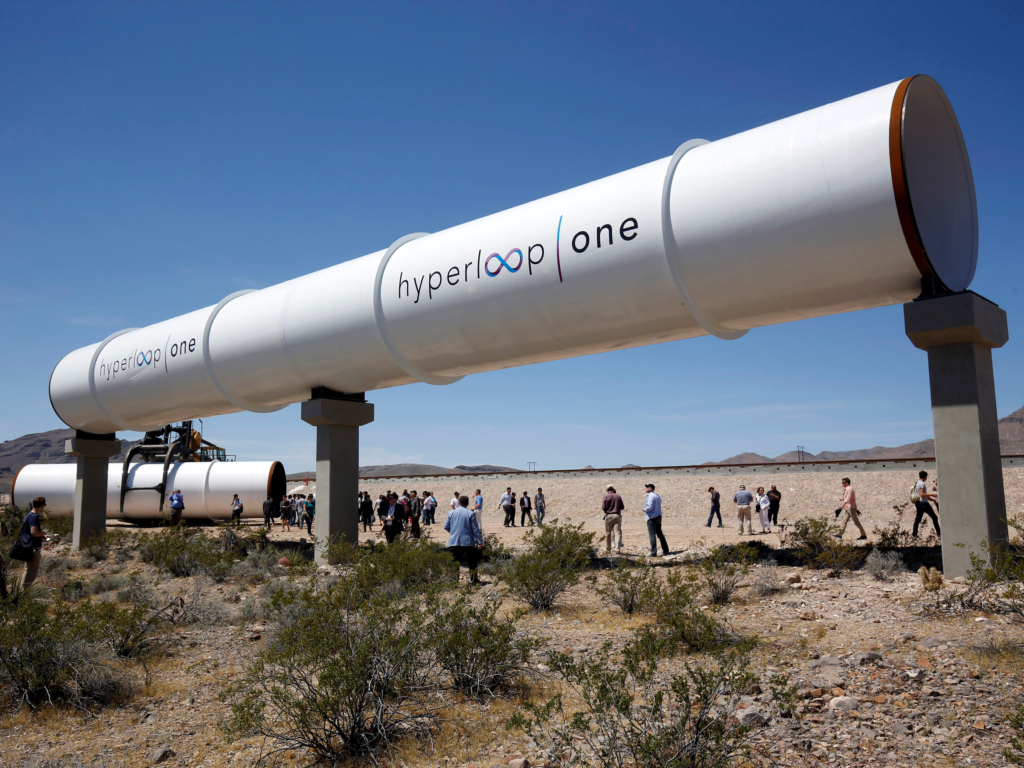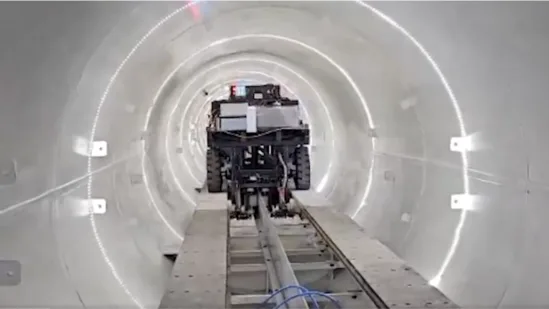India has taken a major step towards high-speed transportation with the unveiling of its first hyperloop test track at IIT Madras. The 422-meter-long facility, developed with support from the Ministry of Railways, aims to advance hyperloop technology, which could enable travel at speeds exceeding 1,000 km/h.
Union Minister Ashwini Vaishnaw announced the development, highlighting the role of government-academia collaboration in advancing futuristic transport systems. He stated that once the technology is successfully tested, the first commercial hyperloop project will be implemented across a 4,050-kilometer site.
Demonstration of Delhi to Jaipur in 30 Minutes
The test track at IIT Madras has demonstrated that a distance of approximately 350 km can be covered in just 30 minutes. If implemented at scale, passengers could potentially travel from Delhi to Jaipur, which is around 300 km, in less than half an hour.
The hyperloop system relies on electromagnetically levitated pods moving inside a low-pressure vacuum tube, which eliminates friction and air resistance. This allows for high speeds with reduced energy consumption, making hyperloop a viable alternative to conventional transport systems.
How Hyperloop Technology Works?
The hyperloop system is based on magnetic levitation (maglev) technology within a low-pressure vacuum tube. This setup eliminates the friction and air drag that slow down conventional trains, allowing hyperloop pods to reach speeds of up to Mach 1 (1,224.71 km/h).
Unlike traditional trains, hyperloop pods do not run on tracks or use wheels. Instead, they are lifted and propelled by electromagnetic forces, reducing wear and tear and minimizing energy loss. The absence of rolling resistance and air turbulence makes the system efficient and cost-effective in the long run.

Potential Impact on India’s Transportation Network
If successfully deployed, hyperloop technology could transform travel in India by drastically reducing journey times between major cities. This would enhance logistics efficiency, improve urban connectivity, and offer an alternative to congested road and rail networks.
Beyond passenger transport, hyperloop systems could also be used for high-speed cargo transportation, facilitating faster movement of goods. This would be particularly beneficial for industries relying on time-sensitive deliveries, such as e-commerce and perishable goods sectors.
Given India’s large population and expanding urban centers, hyperloop technology could play an important role in modernizing transport infrastructure and reducing travel congestion.
Challenges and Feasibility
While the potential benefits of hyperloop technology are significant, several challenges need to be addressed before large-scale implementation. These include:
- Infrastructure Costs – Building vacuum tube networks requires significant financial investment.
- Safety Regulations – New frameworks must be developed to ensure passenger safety.
- Energy Requirements – The system will require a stable and efficient power source.
- Land Acquisition – Securing land for long-distance hyperloop corridors could be complex.
Extensive testing and feasibility studies will be required to assess the long-term viability of hyperloop projects in India.
Industry Collaboration and Future Plans
The project has received contributions from major industry players, including Larsen & Toubro (L&T) Construction, ArcelorMittal, and Hindalco Industries. These companies have played a key role in building the test facility and supporting research efforts at IIT Madras.
Looking ahead, there are ambitious plans to extend this technology for a hyperloop corridor between Chennai and Bengaluru. The 350 km route could potentially be covered in just 15 minutes, significantly improving connectivity between the two cities.
Funding and Next Steps
The Ministry of Railways has already allocated two grants of $1 million each to IIT Madras for hyperloop research. Vaishnaw confirmed that a third grant of $1 million will soon be provided to accelerate development.
He also stated that Indian Railways will implement the first commercial hyperloop project once the technology is fully tested and validated. The decision on its location will depend on selecting an area suitable for large-scale commercial transportation, covering a 4,050-kilometer stretch.
Hyperloop in the Global Context
Globally, hyperloop technology is being developed by companies like Virgin Hyperloop and Elon Musk’s The Boring Company. India’s efforts at IIT Madras put the country on track to join the global race for high-speed transportation.
Way Forward
The IIT Madras hyperloop test track marks an important step in India’s transportation sector. With continued research, funding, and government support, hyperloop technology could become a reality in India, providing a faster, more efficient, and sustainable mode of travel in the near future.
Image source- x.com, businessinsider.in

